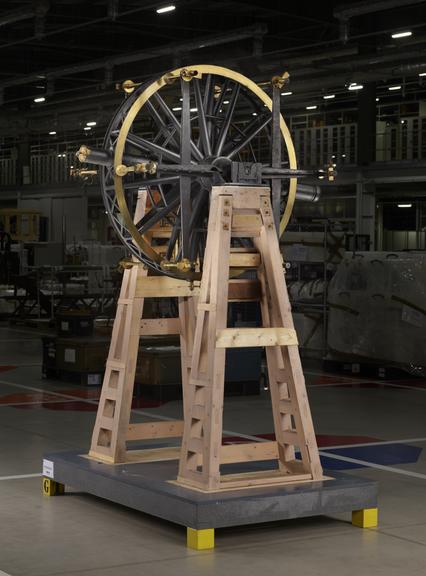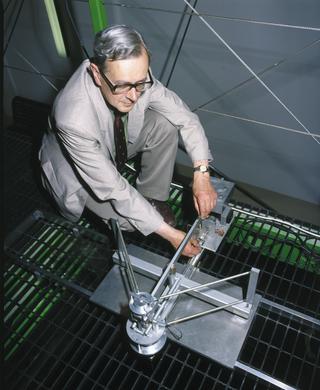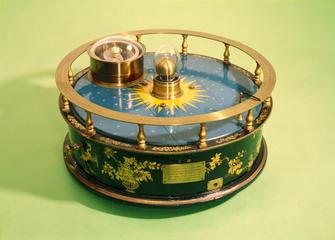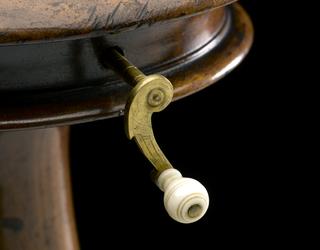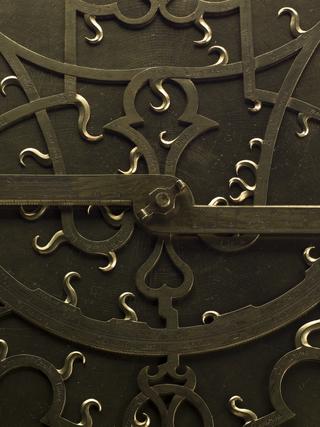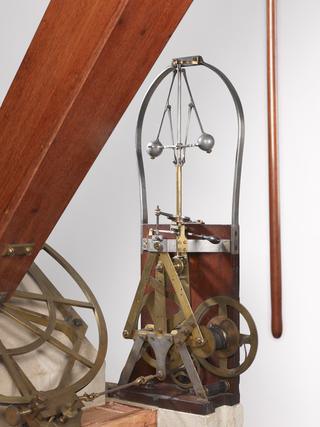Transit circle by Edward Troughton, London
This transit circle was manufactured by Edward Troughton (1753-1835), a British instrument maker. Transit circles were used to track the position of celestial bodies, such as the sun, moon, planets, and stars, by measuring the angle of their passage across the local meridian. The meridian is the great circle that passes through the zenith (the point directly overhead), and the north and south celestial poles. A position is defined by an object’s declination (angle above or below from the celestial equator, roughly analogous to latitude on Earth) and right ascension (angle along the celestial equator, roughly analogous to longitue on Earth.
The instrument consists of a telescope that is fixed to revolving in the plane of the meridian and has to be mounted on a horizontal east-west axis. It includes two 4-foot declination circles, with each circle divided in intervals of five arcminutes. At the moment a celestial object crosses the meridian, its exact declination is determined by the angular position of the telescope. The declination circles are fitted with micromenter microscopes, which allow the observer to read off the exact angle at which the telescope is pointing. The right ascension is obtained by recording the time of a celestial object’s passage with an exact astronomical clock. This means that positions can be determined without any mathematical calculation at all.
Troughton built it for Stephen Groombridge (1755-1932), an influential British amateur astronomer, who installed it in an observatory attached to his house in Blackheath in 1806. Like many others at the time, Groombridge funded his astronomical studies by a business career. Originally trained as a linen draper, he later worked as a West India merchant. At an age of fifty-one and having had a long-standing interest in positional astronomy, Groombridge started working on a project to catalogue all the brightest circumpolar stars (ones which never set below the local horizon due to their closeness to the north celestial pole). By 1817, he had singlehandedly made 24,000 observations of right ascension and 26,000 of declination. Despite never having been trained in mathematics, he was described as having a very accurate eye, both in observing and reading his observations. In 1827, he suffered a stroke which left him unable to continue his work. After his death in 1832, his ‘Catalogue of Circumpolar Stars’, which included 4234 stars, was edited by Astronomer Royal George Biddell Airy and posthumously published in 1839.
The Groombridge Transit Circle was later purchased by Sir James South for his observatory in Campden Hill, Kensington, London, and thereafter sold in a public auction in 1870. In 1885, it was donated to the Science Museum.
- Object Number:
- 1918-169 Pt1
- type:
- instrument component , transit circle and eyepiece micrometer
